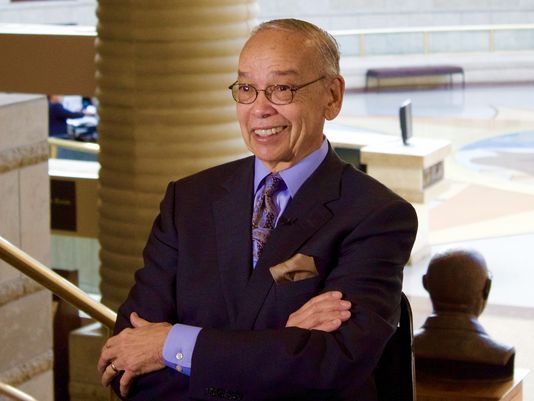
Howard F. Sims played a leading role in designing much of Detroit’s landscape over the last 50 years, its ambitious downtown revival and its Herculean urban renewal neighborhood efforts.
But blacks didn’t always have an opportunity to help create the city’s skyline and neighborhoods.
“Certainly it’s true that at one time, black architects had only one major client: churches and maybe funeral homes,” he told the Detroit Free Press in 1982. “It wasn’t until the mid to late ‘60s that black people entered the decision-making process so far as what might be built and where, and how it should look.”
Sims died last week after suffering a heart attack. The 82-year-old had been associated with many notable construction projects. They included:
- Cobo Conference and Exhibition Center 1981-89 expansion and 2010-2015 capital improvement program
- Charles H. Wright Museum of African American History
- University of Michigan School of Social Work
- University of Michigan-Dearborn General Campus renovation
- George Bush Intercontinental Airport international arrivals section
- Detroit Wayne County Port Authority Terminal
- Greektown Casino
- Detroit Historical Museum Renovations and Master Plan
- McMichael Middle School
- Orleans East Apartments in Lafayette Park
- Franklin Wright Village in Elmwood Park
- Research Park Apartments near Wayne State University
- Wayne County Community College District’s downtown and northwest campuses
“If you asked Howard Sims which of his designs he loved best – good luck getting a straight answer, but if you listened well he always came back to one building – the Charles H. Wright Museum of African American History,” said David E. Rudolph, family spokesman.
“In our community we call death a home going. So we should all rest knowing Howard Sims will continue his design work now with the Lord. We will miss him now, but know one day will see him again.”
Born in Detroit on July 25, 1933, Sims graduated from Northwestern High School. Sims once recalled that from the time he was 13 years old he wanted to be either a basketball player or an architect.
Sims joined the Navy in 1951 and served as Petty Office First Class in the construction battalion during Korean War. He earned a bachelor’s degree in architecture and a master’s degree in architecture from the University of Michigan.
“The GI bill gave me $90 a month and Seabees experience paid off in two years of working credit toward my state architectural license,” he recalled. “I think it probably gave me a head start on other architectural students. I knew know things were built physically; all I had to learn was the science involved.”
Sims opened a design office on Main Street in Ann Arbor 1964, moved to Detroit in 1968, and became president of Howard Sims & Associates when the firm incorporated in 1969. The firm is widely considered the oldest black-owned architectural business in Michigan. Architect Harold R. Varner joined the firm in late 1973 and has been a partner and executive vice president in 1976. The firm currently operates as SDG Associates.
Sims was involved in writing the state’s first construction code and in 1979, he was elected chairman of the board of directors for the Federal Reserve Bank of Chicago, Detroit branch.
He married Judith Perry and their union produced four children: Frances, Gregory, Laurence and Wesley.
A public viewing will be held from 2-8 p.m. on April 8 at the Charles H. Wright Museum of African American History, located at 315 E. Warren in Detroit. His 11 a.m. homegoing service will be held on April 9 at Empowerment Church, located at 24300 Southfield Road in Southfield.
What was Howard F. Sims’ secret of success in his own words?
“I’m never satisfied with good enough performance, especially in myself.”